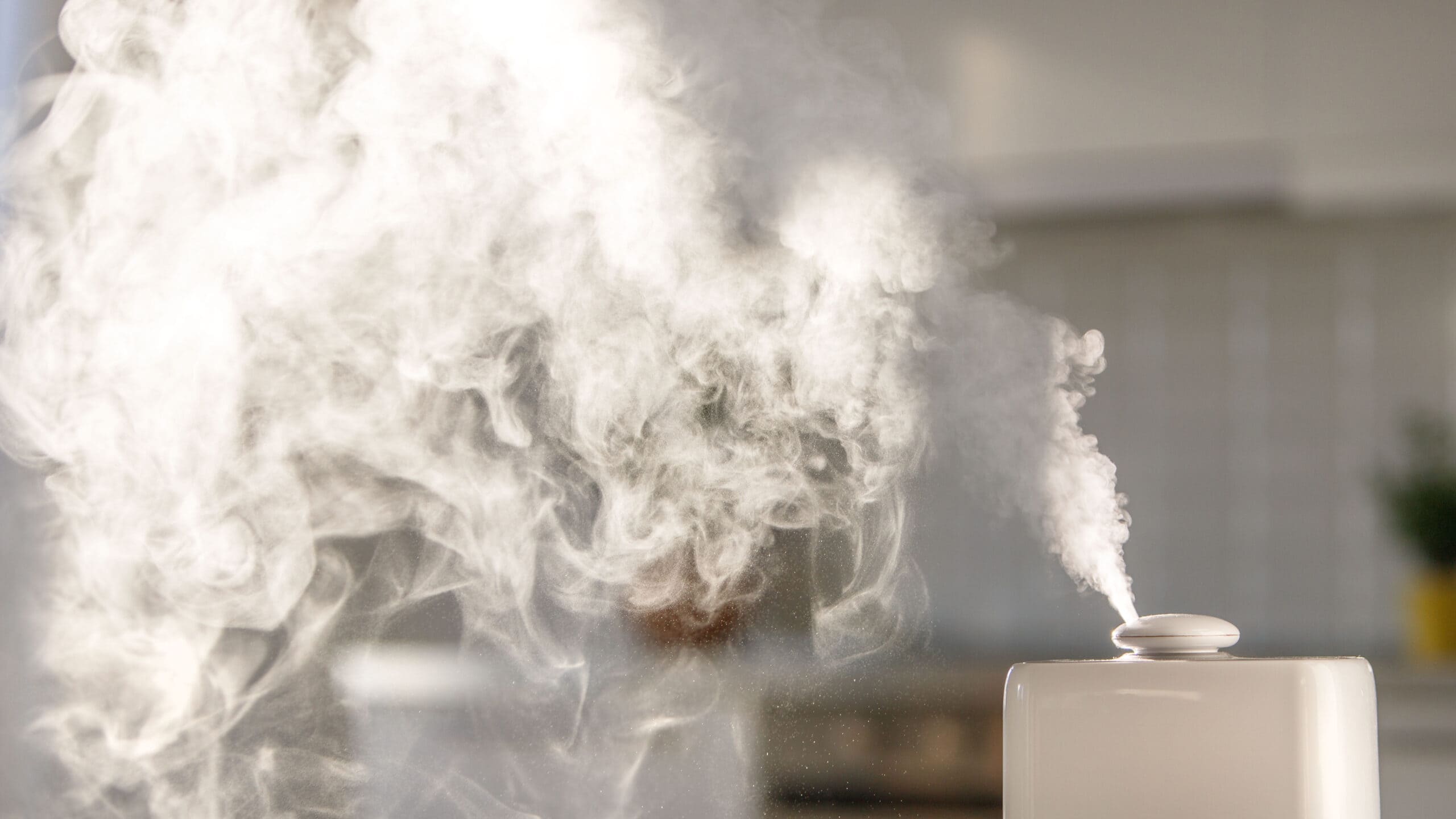
In the market for a humidifier but not quite sure whether you need one or even what they do? Maybe a friend or doctor recommended you get one and you’re just wanting to learn more.
We are here to clear things up and help you understand what a humidifier does, how to maintain it, and what you need to know before buying one. If you already have a specific question in mind, use our table of contents to bounce around.
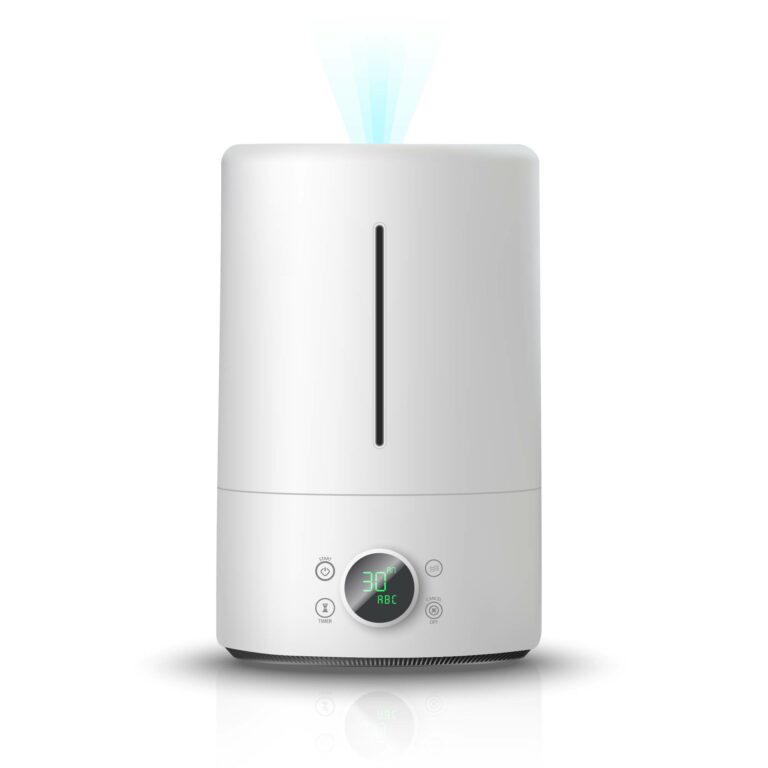
Humidifier Basics
What is a Humidifier?
A humidifier takes water and turns it into either a warm or cool vapor mist, which it releases into the air. This adds moisture to dry air, hydrating your skin and moisturizing your airways. Humidifiers are particularly great in the winter since moist air more evenly distributes heat and keeps you comfortable.
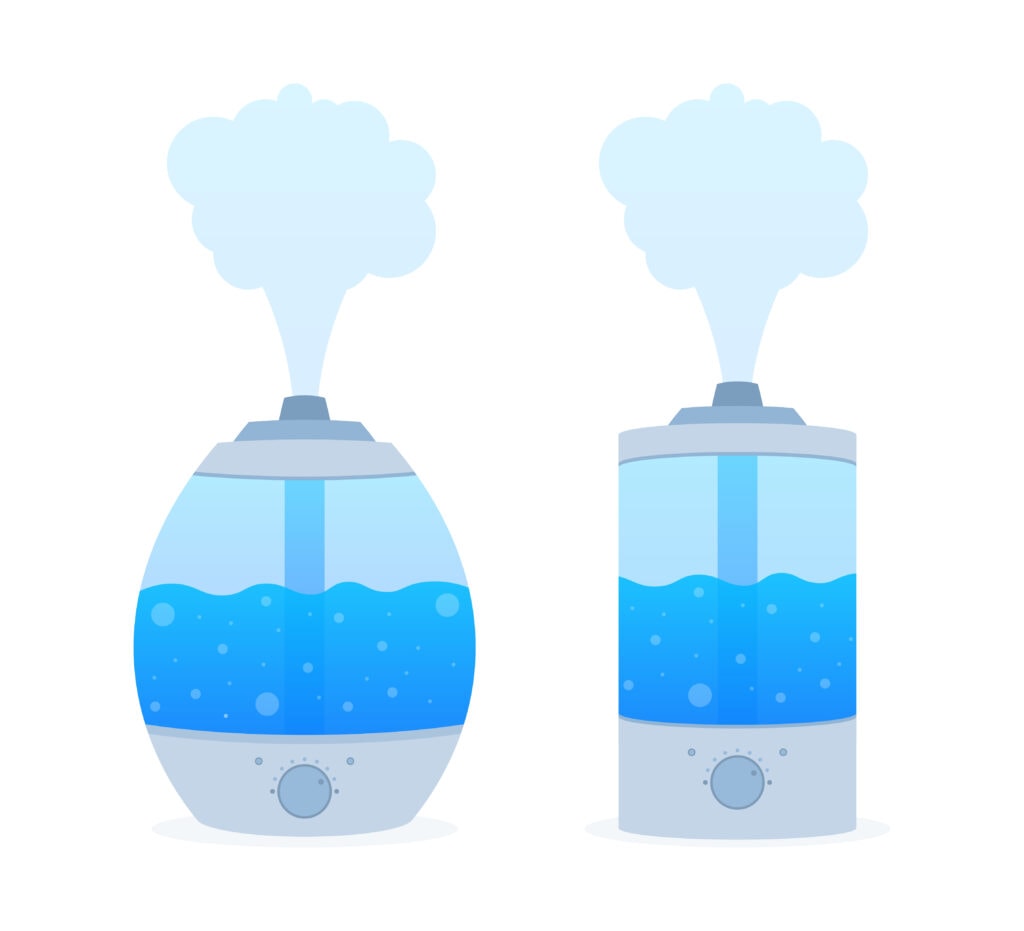
Adding humidity to the air can also soothe cracked lips and dry skin, as well as reduce the discomfort of cold symptoms. However, these devices must be used with caution, as a dirty humidifier can grow mold and bacteria and release it into the air you breathe.
Humidifiers can even help keep your plants healthy and strong by keeping the air moist. Some even combine a purifier and humidifier to keep your air clean and moist.
How Does a Humidifier Work?
Humidifiers work through a variety of methods to add moisture to the ambient air. They do this by evaporating water into the air. This can be in the form of a warm or cool mist. Most units are self-regulating and can detect the current moisture levels in the air. This prevents the air from becoming overly damp.
Although the mechanics differ, these devices have one job, and that is to add humidity to the surrounding area. Most units can only humidify a single room, although whole house units exist which hook into your existing HVAC system. These more powerful versions use a humidistat to detect moisture levels, much like a thermostat detects temperature. It then turns on and off to reach desired humidity levels.
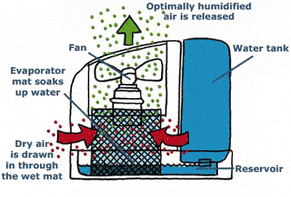
Cool mist humidifiers do not heat the water in order to cause evaporation, they do this through a filter, comb-like diffuser, or with the help of sound vibrations. Warm mist versions use a heater to boil water, which produces steam, much like a pan of water on your stove.
Types of Humidifiers
As mentioned above, there are two types of moisture a humidifier can produce, either a cool mist or a warm mist. Warm mist comes from boiling the water, while the cool mist is produced in a few different manners.
Here are the most common humidifier types:

Steam
First, let’s tackle the heated method. Steam, or vaporizer, humidifiers use heat to cause water to evaporate, releasing a warm mist into the air. This occurs by boiling the water inside the unit. Due to the high temperature necessary to boil the water, these units can be dangerous for children. However, they are the simplest and least expensive option.
Evaporative
Evaporative humidifiers use a wick filter system to absorb water from a reservoir. A fan draws in air and directs it across the filter, causing water to evaporate into a cool mist that is expelled into the air. This type of humidifier is naturally self-regulating based on the amount of moisture already in the air.
Impeller
An impeller humidifier uses a high speed fan to fling water at a comb-like diffuser which breaks the droplets into a mist which is released into the air as a cool fog.
Ultrasonic
Ultrasonic humidifiers use a metal diaphragm which vibrates at ultrasonic frequency to create water droplets. These tiny droplets are then released into the surrounding area as a mist. This type is virtually silent and typically does not use a filter, which keeps maintenance costs down.
Above are the most common types currently available. Of course, there are also whole house humidifiers, those that double as a diffuser, and others made specifically for certain large spaces, like crawlspaces and basements. No matter where you need some extra humidity, there is a humidifier that can do it.
What Do You Need to Know Before Buying?
If you have decided you need a humidifier, your next question is, how do I know which one to buy? Here are some helpful metrics to help you decide.
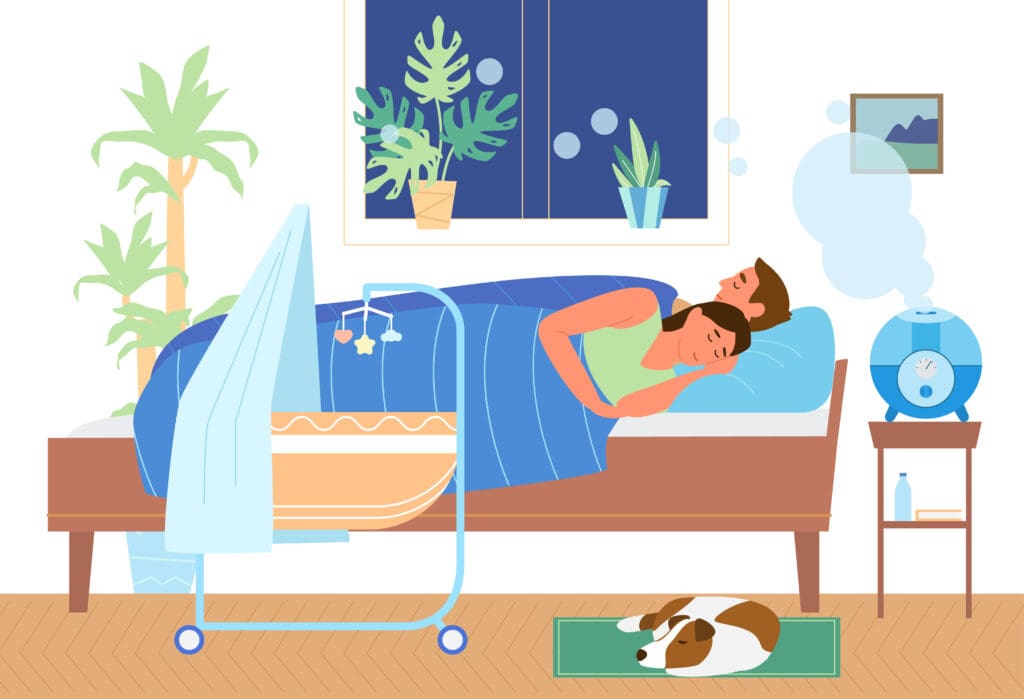
What Size of Humidifier Do I Need?
Humidifiers come in a range of sizes from portable humidifiers for usage in a car or at your desk all the way up to whole house humidifiers. This means your first step is to decide how large of an area you wish to humidify.
Your first step is to calculate the square footage of the space you want to humidify. Manufacturers list the recommended square footage for a unit as well as the expected output. This can help you narrow down what you need.
Bigger is always better, right? Well, not in this case. If you get a unit that is too large, you may end up with excess humidity in your air which can cause mold and mildew issues. A unit that runs less often due to humidifying too small a space can allow bacteria and mold to grow in the tank. Choosing a suitable size is always the best option. To help you with it, use the calculator below.
How to Choose a Humidifier
Choosing a humidifier can be a difficult task with so many sizes, types, and brands out there. Here are some things to consider when looking for one:
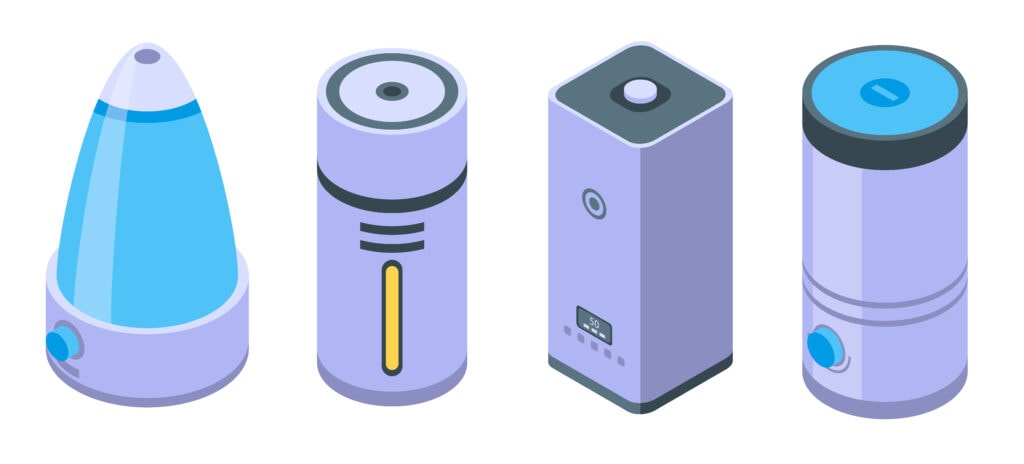
Size
First off, you want to determine the correct size for your space. This will ensure you achieve the right amount of humidity.
Capacity
The amount of water your unit can hold will determine how often it needs to be filled. A smaller tank will need to be filled more often.
Noise
Humidifiers can make almost no noise or produce a hum or buzz that some people find uncomfortable. If being used in a quiet environment, such as a bedroom, you will want to keep the sound at a minimum. There are many quiet humidifier options available.
Maintenance
Humidifiers require more maintenance than a lot of other products due to the constant presence of water. This can include cleaning, changing the filters, and more. Be sure you know what is required so you aren’t caught off guard.
Safety
Whether you have pets, children, or live alone, safety is a top priority. Be sure the unit shuts off when empty to avoid a fire hazard, consider the type of mist produced, and be sure you can clean all parts to ensure the safety of you and your family.
Popular Humidifier Brands
While there are always cases of one-off brands producing a top-notch product, there are some brands whose humidifiers stand head and shoulders above the rest.
Here are a few reputable brands who know their stuff. Click on the links to go to our full brand reviews.


● Honeywell
● Vornado
● Pure Guardian
● Air Innovations
● Crane
● Levoit
● Vicks
Humidifier Maintenance Tips
Unlike many other devices, a humidifier requires a good amount of regular maintenance. They are also prone to some common problems. Here is some info to give you an idea of what to expect.
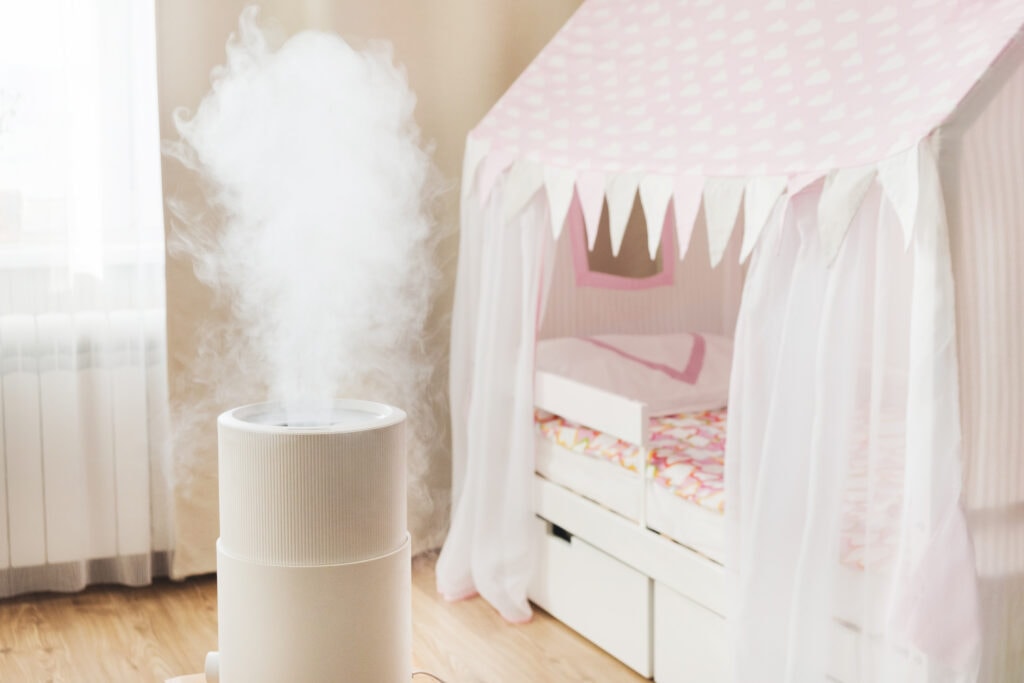
Common Humidifier Issues and Troubleshooting
If you have trouble with your humidifier, here are some ways to identify and fix some of the most problems:
Why is My Humidifier Not Turning On?
If your humidifier isn’t turning on, the first thing you need to do is make sure it is getting power. Check the cord for damage and be sure it is plugged in. Next check the circuit breaker and GFCI plug (if included) to be sure they haven’t been tripped. Turn off the unit and make sure it is level. Let sit for one hour and then try again. If this still doesn’t fix the issue, you may need to repair or replace the unit.
There’s No Mist Coming Out Of My Humidifier
When the humidifier turns on but no mist comes out, you may have a blockage. First disconnect the unit from the power source and empty all water. Disassemble the unit and examine and clean all parts. Watch for a crusty white or brown residue that indicates mineral build up. Water contains many minerals and can keep your humidifier from functioning properly.
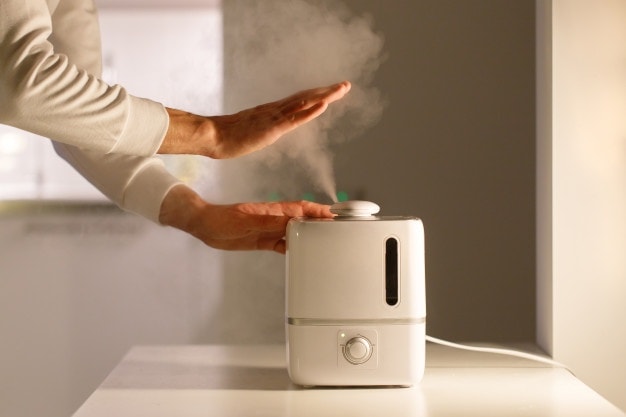
My Humidifier is Leaking, How Do I Fix It?
First try to identify where the water is coming from. If the mist nozzle is leaking, try a lower setting. If it is leaking from somewhere else, inspect your reservoir for cracks and be sure the cap is on correctly and the gasket is intact and in place.
Also make sure the reservoir is properly seated. A tank that is offset will not provide a proper seal and may leak. If the unit is damaged, look for replacement parts or replace the entire unit.
Why is There White Residue Coming From My Humidifier?
The good news is that the white dust you see isn’t dangerous. It is a byproduct left behind when the water evaporates. Water contains natural minerals that are left behind. The dust can easily be cleaned off. Using bottled or filtered water can help reduce the appearance of this white residue.
There’s a Bad Odor Coming From My Humidifier
What kind of odor? If it is a burning smell, turn off your humidifier immediately and check for frayed wires, or damage. It is possible a motor or fan has gone out. Let the unit cool and open it up to look for any damaged parts.
If the smell is musty, moldy, or smells like dirty socks, your humidifier likely needs a good cleaning. Remove and replace the filter, soak the reservoir in white vinegar, and scrub down all washable parts. This includes the cap, nozzle, reservoir, reservoir seat, and filter housing.
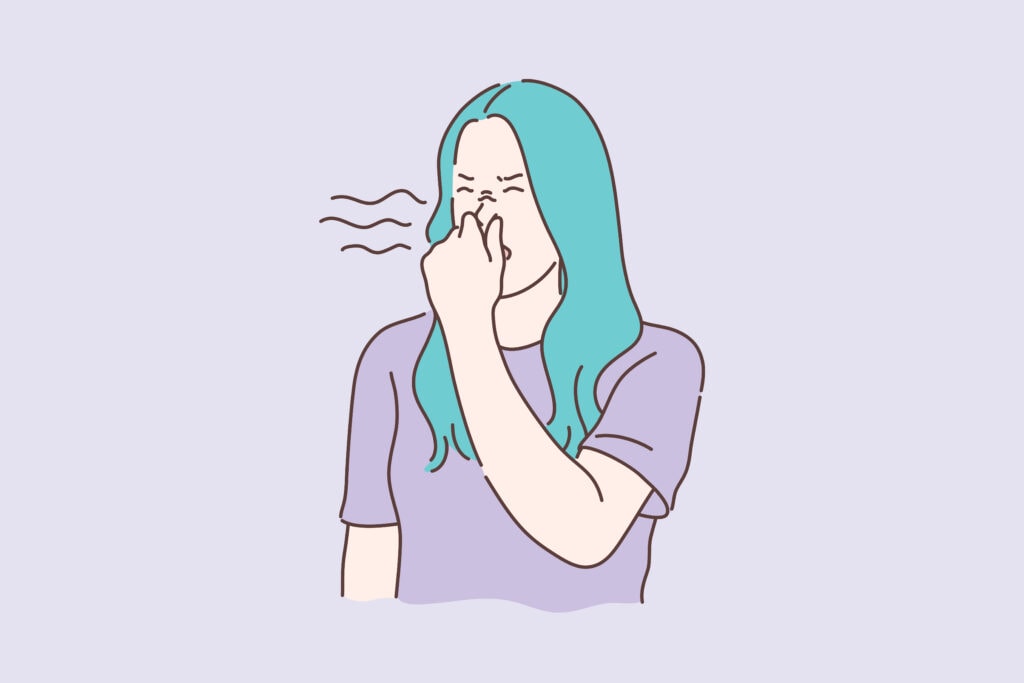
How to Install a Humidifier
1. Installing a room humidifier is a simple process. While installation isn’t really an issue, placement can be a bit tricky.
2. Ideally, a humidifier should not be on the floor unless it is designed to be. If it is, the unit will likely have wheels to make it easy to place and move. All other units should be placed on a flat, even table or countertop.
3. Ensure the unit is on a waterproof surface and keep objects that are easily damaged by water out of reach of the vapor mist. As these produce a damp mist, electronics and paper can be susceptible to damage if located nearby.
4. Be sure the area around your humidifier is clear so it can draw in plenty of fresh air to operate.
5. Place the humidifier in a frequented room. Most humidifiers affect a specified area so be sure it is in an area where people will regularly benefit. This can be a living room, kitchen, or bedroom.
6. If using a warm mist humidifier, keep in mind that the unit uses heat to produce steam. Keep this away from children and pets.
For whole-house humidifiers, the installation will be more complicated and should be handled by a professional. To get an estimate on the installation cost, kindly refer to the calculator below.
However, if you are determined to do it yourself, here is a video to help you get started.
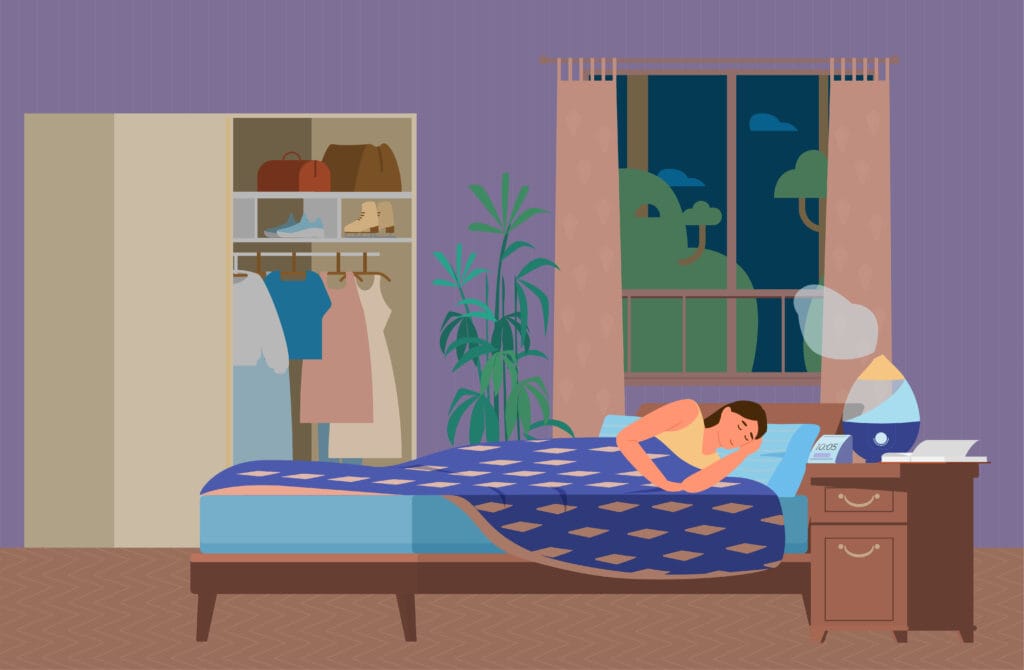
How to Clean a Humidifier
1. Before beginning any cleaning or maintenance, you need to be sure your humidifier is powered off and unplugged.
2. Next, take apart all removable parts. If you aren’t sure which parts are removable, consult your user’s manual.
3. Pour distilled white vinegar into the base unit and the reservoir and let it sit for 30 minutes to loosen any mineral build up. (If no residue is present in the base, a quick wipe down will suffice).
4. While those are soaking, put all other plastic parts in a sink full of dish soap, water, and distilled white vinegar. Do not put any electrical components in water.
5. After 30 minutes, empty the water and use a soft brush or Q-tip to scrub any problem areas. Be sure to get rid of all mold and any loosened debris. Be cautious of the electrical cord and motor. Pour away from these sensitive parts.
6. Use a cloth to wipe out the inside of the reservoir to ensure no mold, dirt, or bacteria remain.
Replace the filter (if present).
7. Rinse well, reassemble, and you’re all set. If the unit won’t be used right away, let all parts dry fully before reassembling and storing.
If you need a more detailed explanation, check out the our article on how to clean your humidifier or check out the video below:
How Often Should I Clean a Humidifier?
Your humidifier should be cleaned regularly. This includes a quick wipe down and inspection each time you fill the reservoir. If you see visible dirt, mold or build-up, it is time for a deep cleaning, as described above.
The indoor unit should be serviced and the blower and blower motor cleaned regularly. This is best done by a professional.
Full cleanings should be done every 1-2 weeks depending on the water you use and frequency of use. Hard water will cause mineral deposits faster and will need to be cleaned more often to extend the life of your humidifier.
When is it Time to Replace My Humidifier?
Room humidifiers generally last 3-5 years, while the lifespan of a whole house humidifier is 10-15 years. Both of these values depend on how well the unit is maintained.
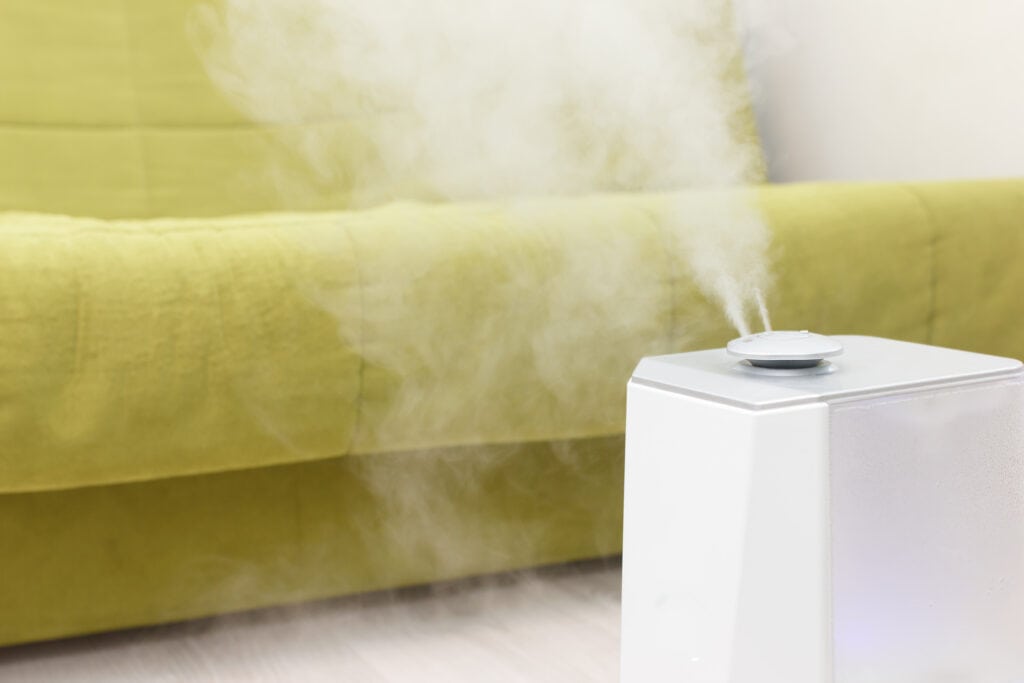
No matter which type you have, the humidifier is in constant contact with water which can cause mineral deposits and mold to build up. If proper care is taken, these will not cause significant issues or shorten the lifespan.
You Smell Something Burning When You Turn It On
A small amount of odor can be normal, but if you consistently smell burning when using your humidifier, it likely needs to be replaced.
Little or No Mist Comes Out
A unit that is not producing mist, despite a full, deep clean, may have an internal issue, which requires a replacement.
It’s Old
If your room humidifier is more than five years old or your whole house unit is older than ten, and you are experiencing regular issues, it is time to replace it.
Don’t be discouraged if you need to replace your humidifier, things get old. It happens. Additionally, there are probably more efficient, feature-rich options available that you can enjoy.
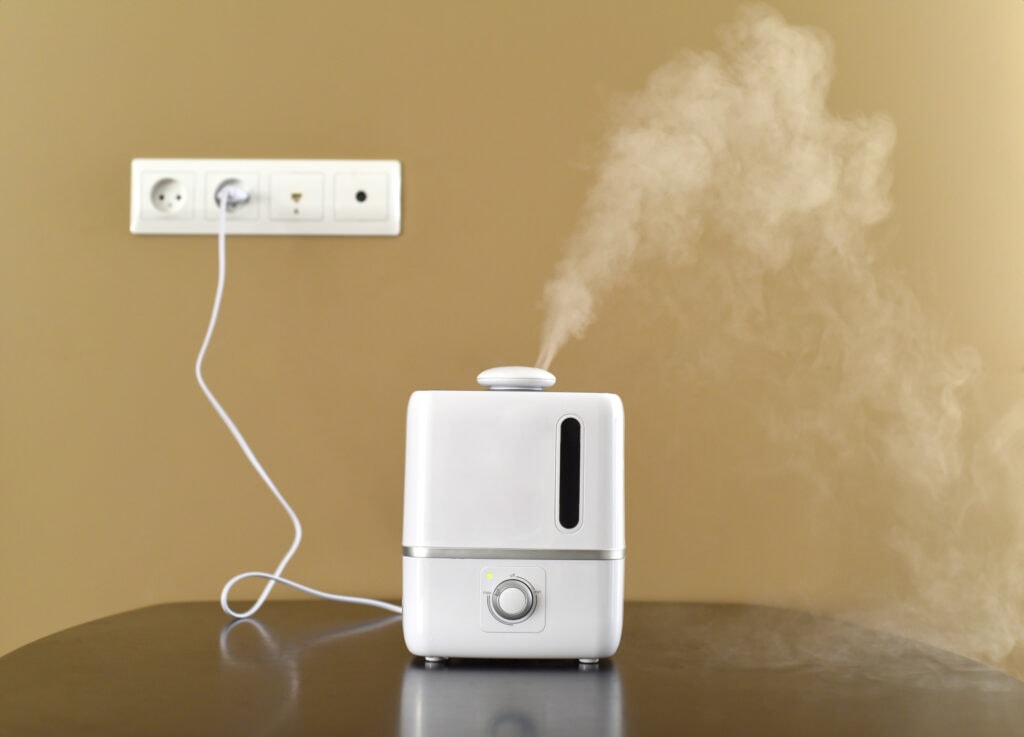
Can You Really Find a Quality Humidifier That’s Affordable?
Depending on what you are looking for, humidifiers run from around $30-$800. Whole house options are on the higher end, with a plethora of options in-between.
Decide on your budget first. This will give you a good starting point. Then you can narrow down your options.
Your best bet is to determine what you actually need and focus on products that meet that need. If you spend most of your time in one or two rooms, it is likely easier to buy a smaller portable unit you can move between rooms. If you have a large room to humidify, you’ll need a more powerful unit.
If you do want a whole house option, be sure it is properly installed and maintained to allow you to get the most out of your money.
Conclusion
Humidifiers have a host of benefits including reducing the severity of allergies, managing asthma symptoms, soothing coughs and reducing respiratory symptoms. It’s no wonder so many people use a humidifier regularly. Hopefully, you’ve found the information you are looking for here. Thanks for reading.

HVAC Training 101 is a participant in the Amazon Services LLC Associates Program, an affiliate advertising program designed to provide a means for us to earn fees by linking to Amazon.com and affiliated sites. Pages on this site may include affiliate links to Amazon and its affiliate sites on which the owner of this website will make a referral commission
